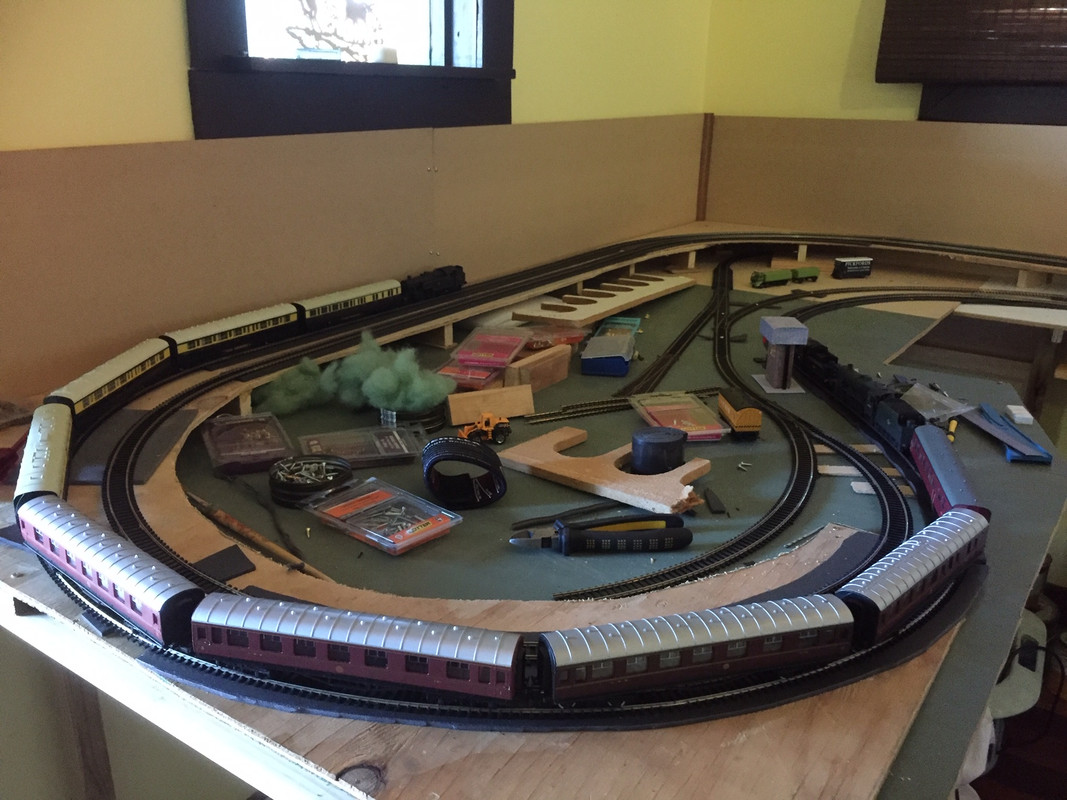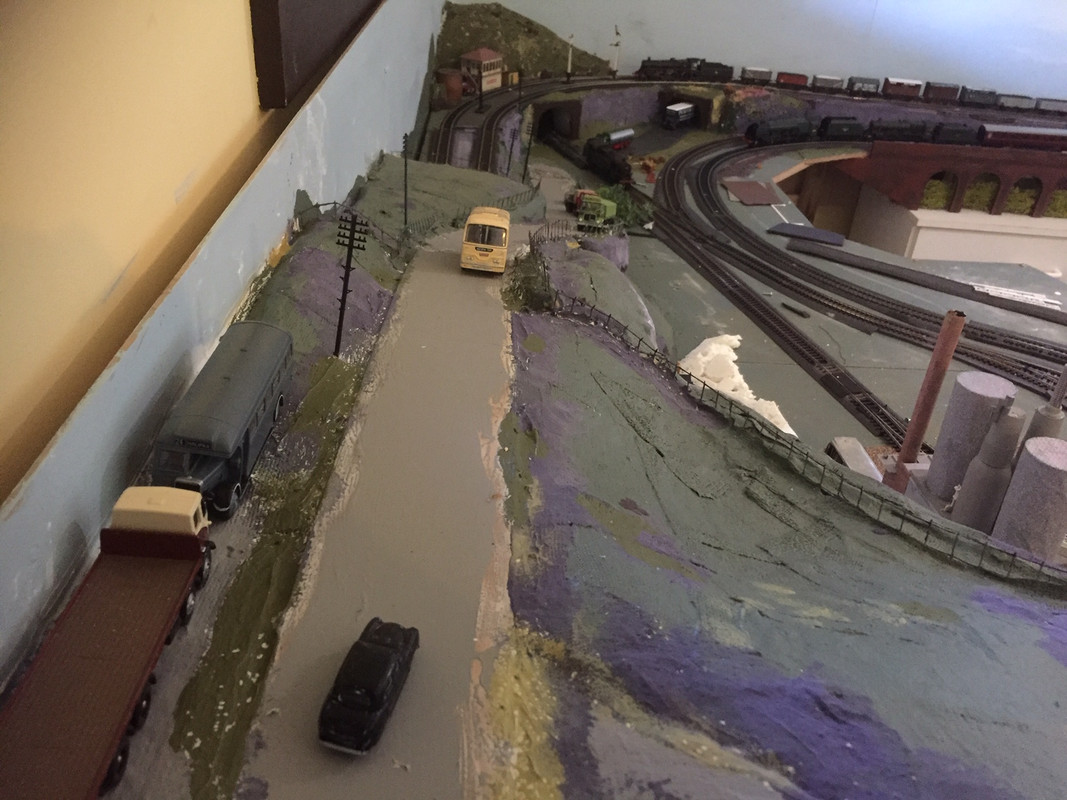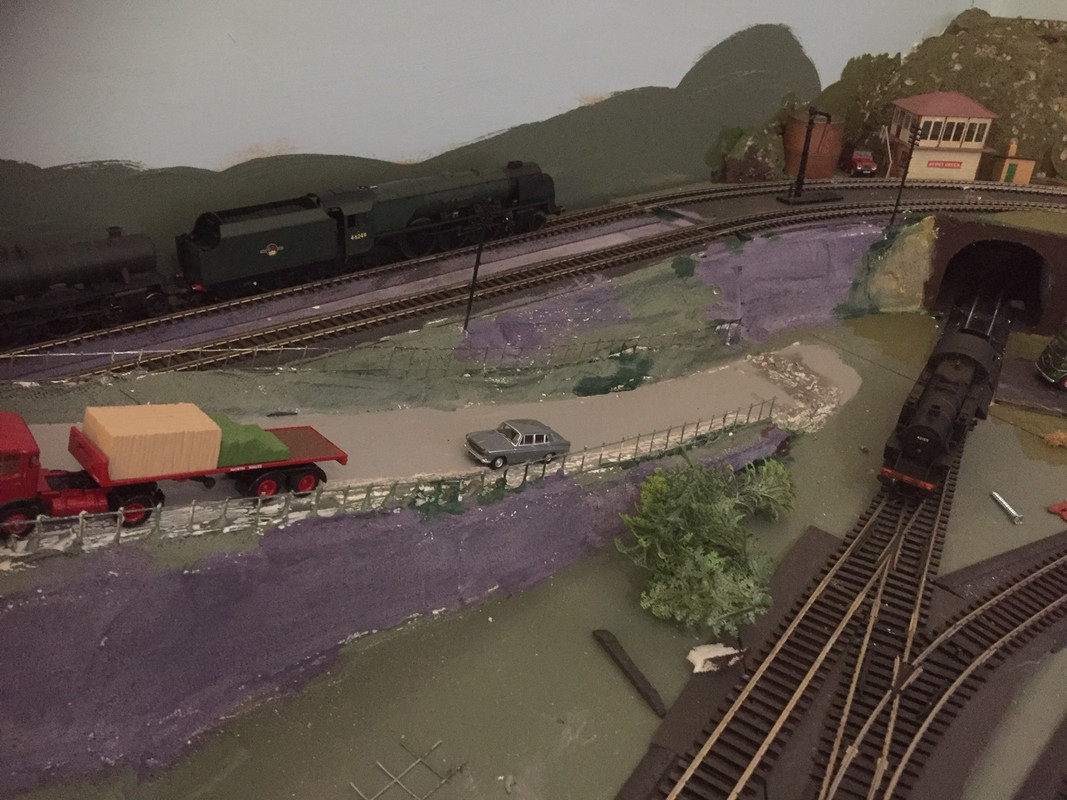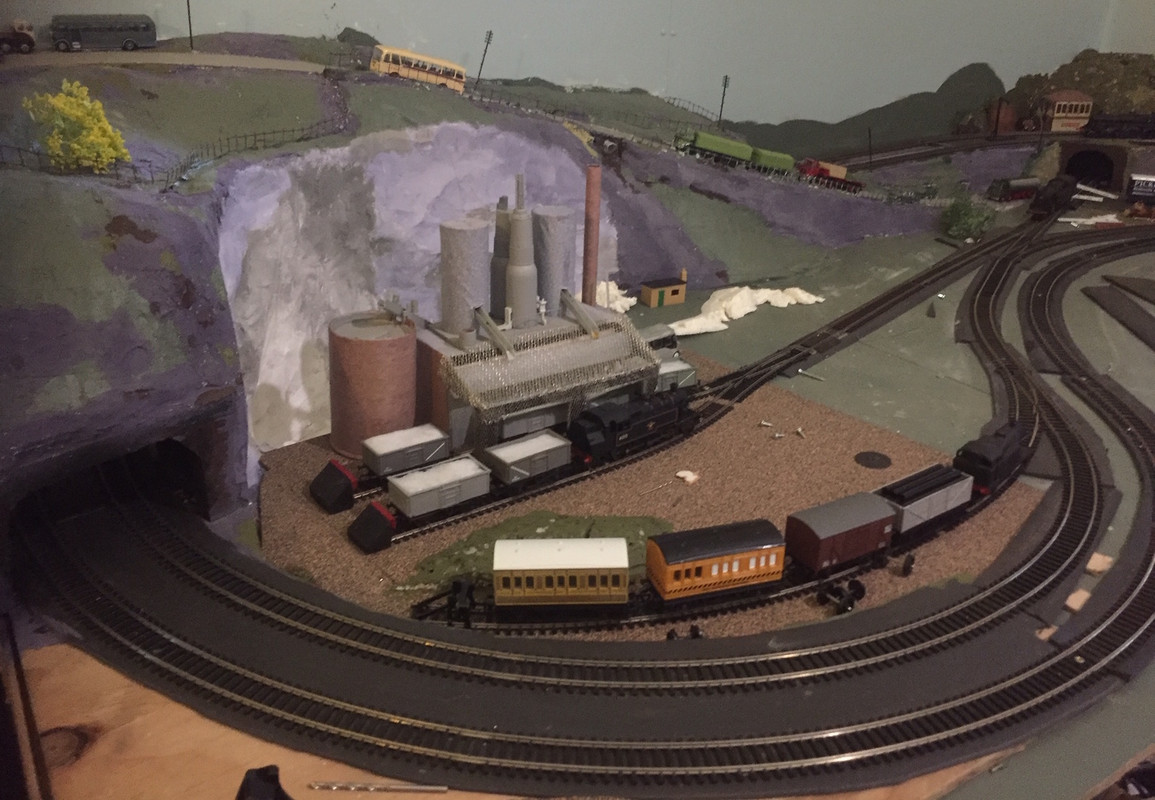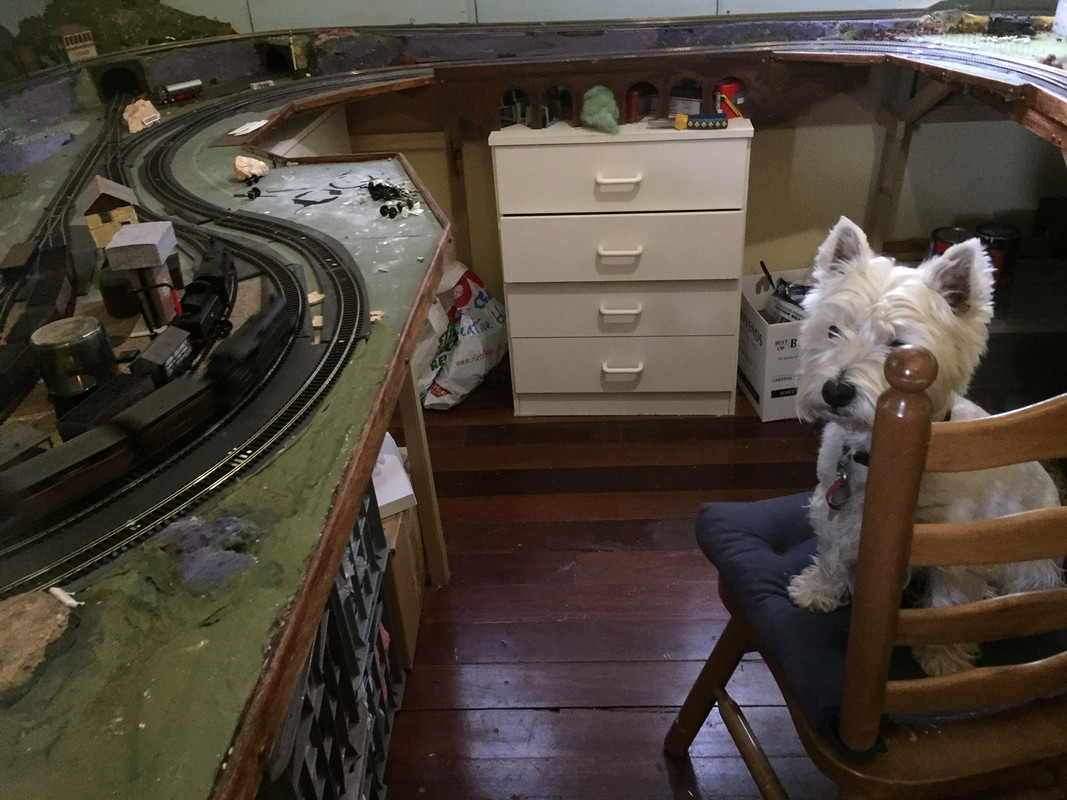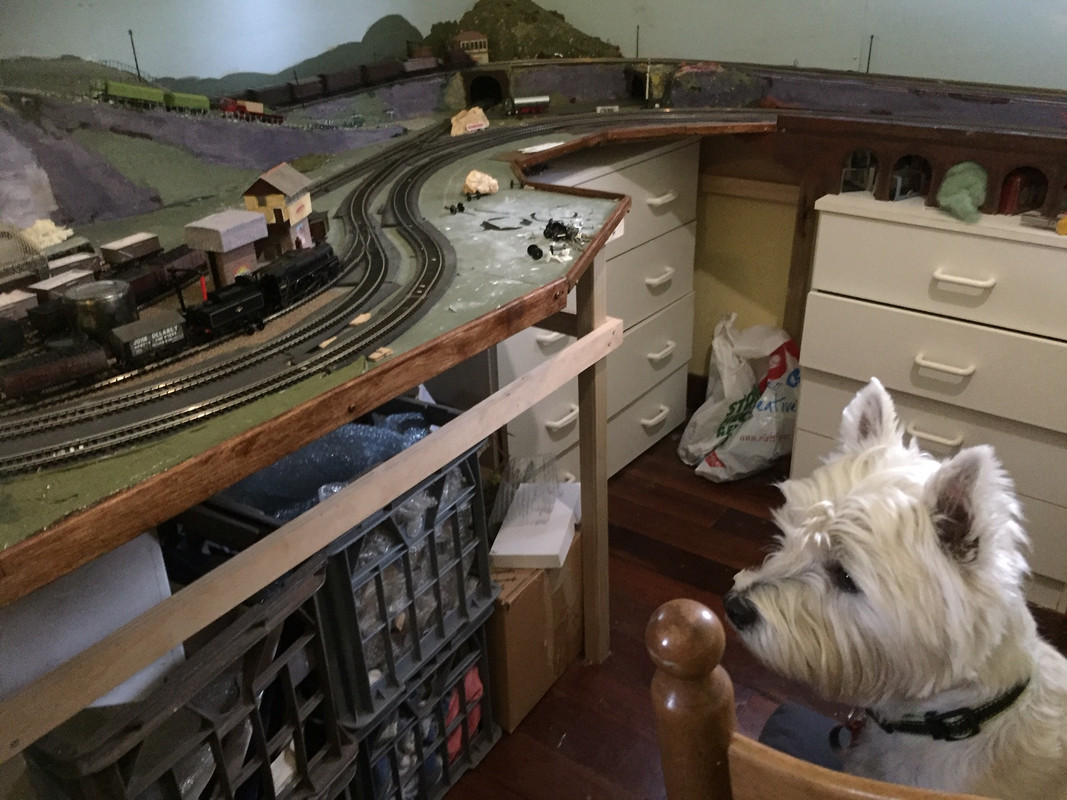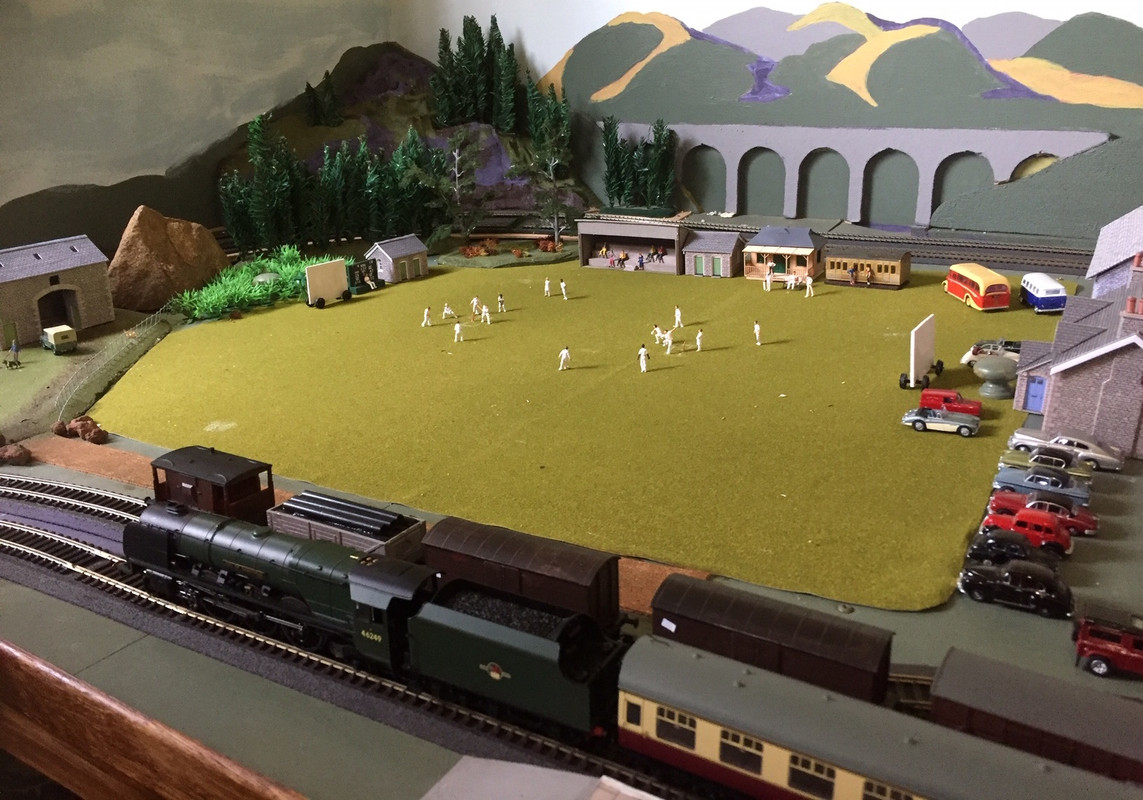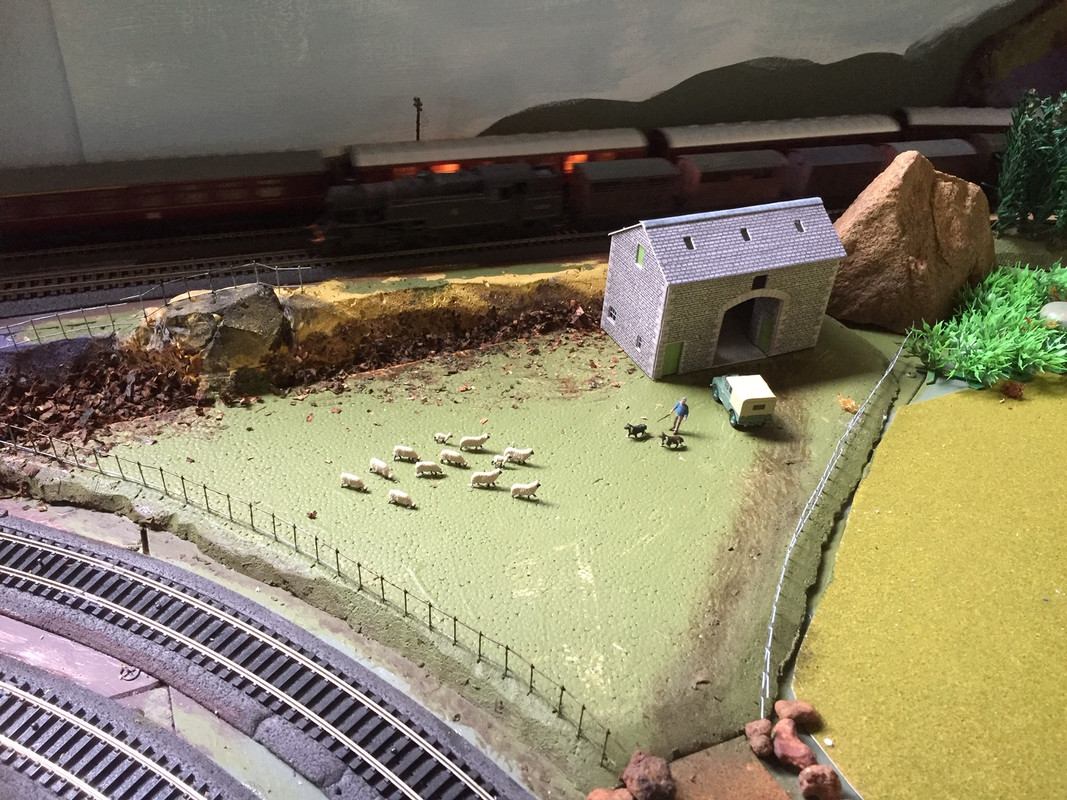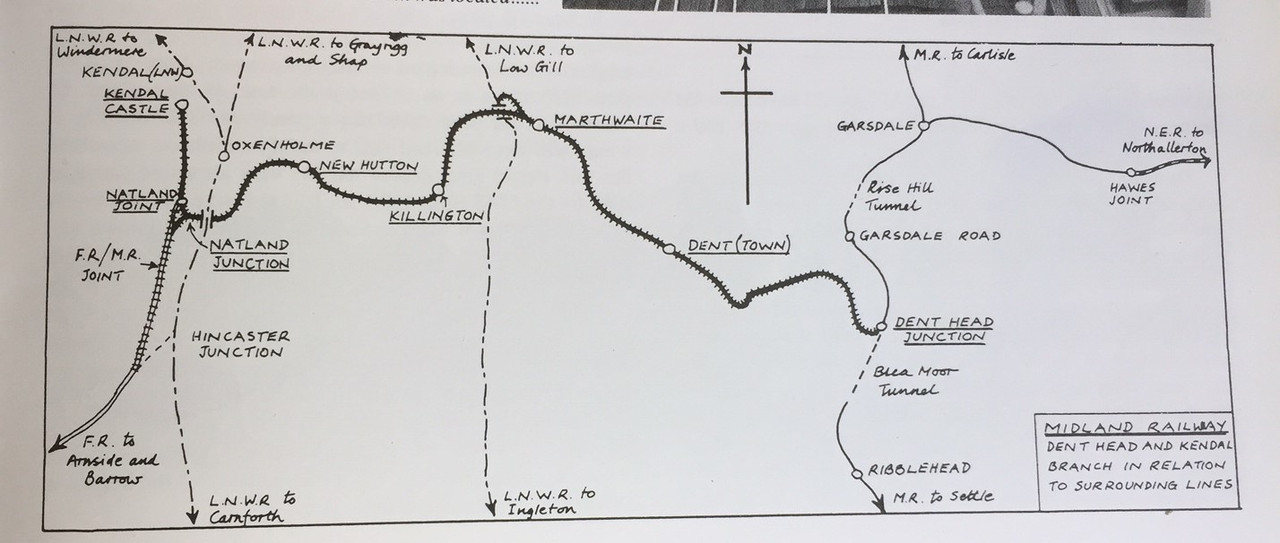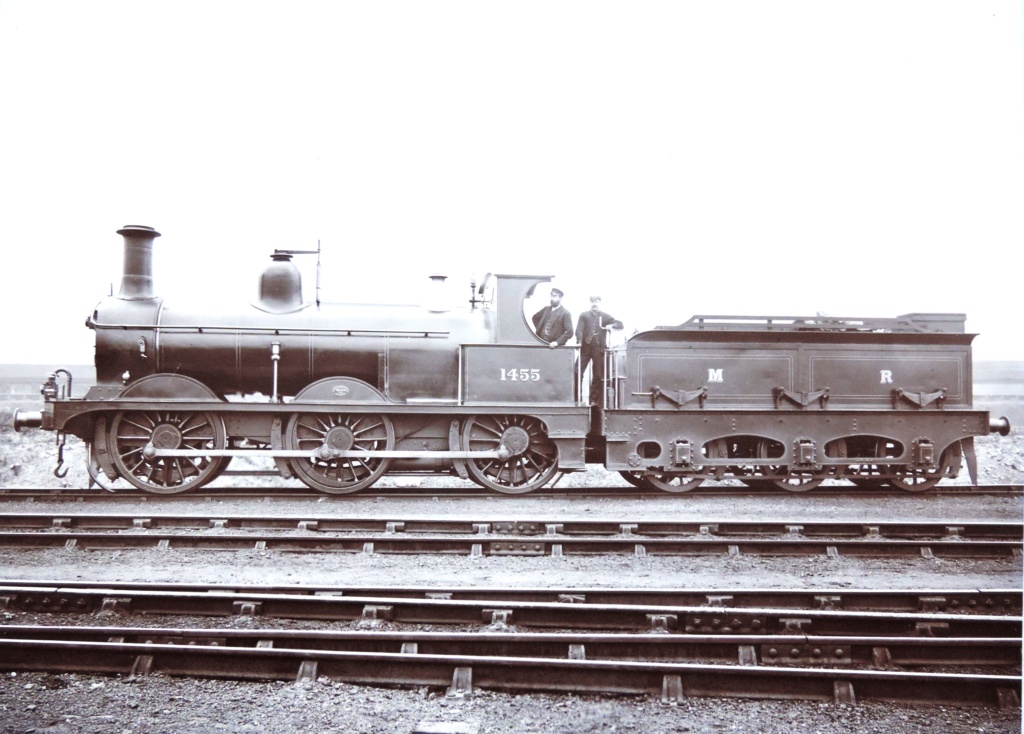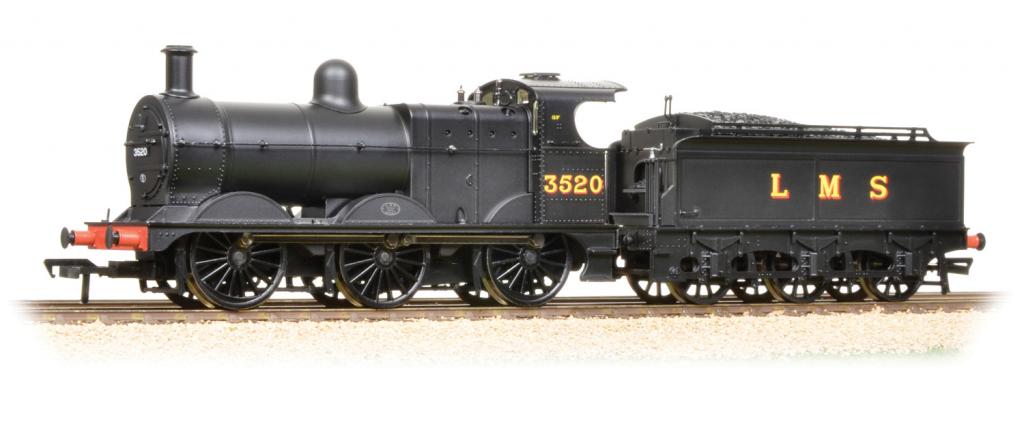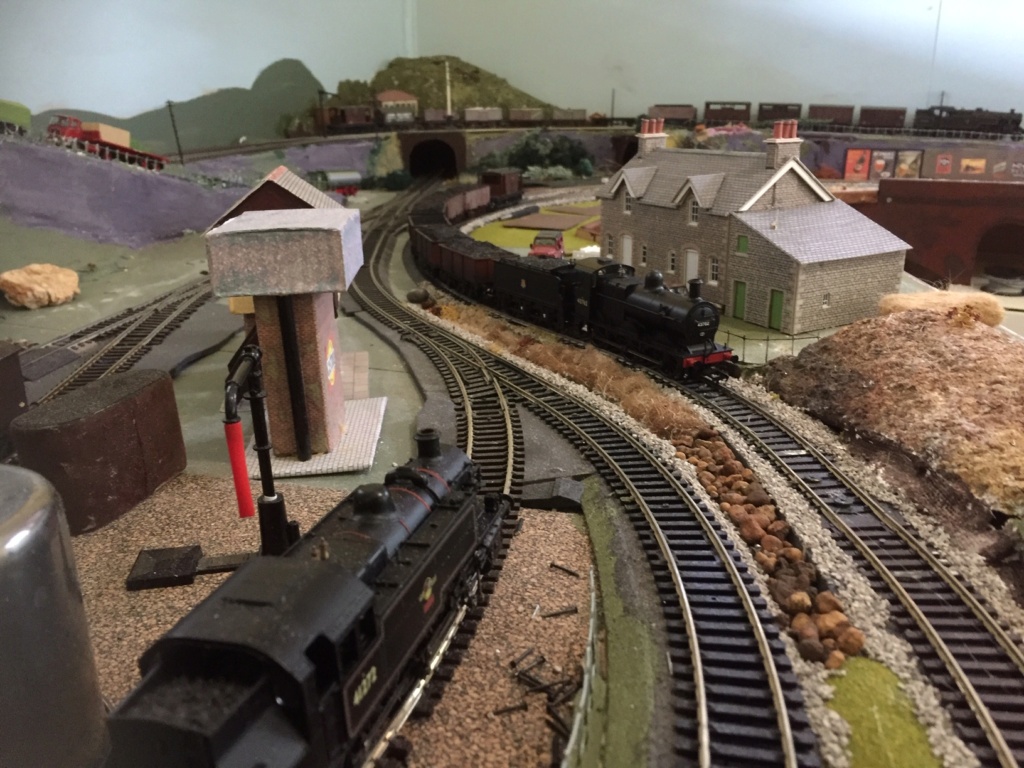It's all about illusion, isn't it? Initially I was very slap dash with this, particularly the back drop/s. Everything could be improved on at a later date. Or not. I was never going to recreate Oxenholme with any accuracy, so it was just about the feeling, or illusion, of being there. You can't cram all the features you want in such a small space, especially if you want town and countryside. So what are the requirements? In this case it was all about memories, so actual realism is perhaps less important. As a small boy I often travelled between Oxenholme and Carlisle, and lived about 2 miles from Oxenholme. We'd stand on the bridge there, running from one side to the other as the trains passed underneath. I smoked my first cigarette with other schoolboys on one of those trains. We'd bicycle along Paddy Lane, watching the trains climbing Grayrigg bank, often with the assistance of a banking loco pushing it along. And later, my sister and I travelled on the footplate of a banking tank engine up that hill. Quite illegally of course, but the driver was a mate of Dad's. Nowadays I wonder what that tank engine was. An Ivatt? A Fairburn? It didn't matter then, but seems more important now.
Anyway, a Build Thread is about the building, but the anecdotal stuff , to me is very much what it is all about. Now the first known photo of the EWR shows two large linked ovals and a siding. A large piece of ply was extracted from underneath my stepson's bed and so it would be fair to say that the layout started off as queen sized. This all sat on a table, which wasn't large enough, so you may observe some gradients at one end.
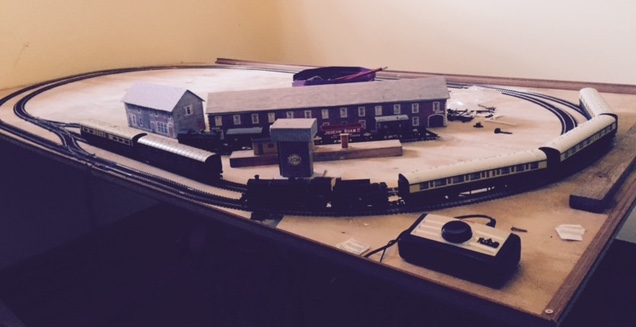
Essentially this was the learning stage. I had had nothing to do with electric trains for over 50 years, and I needed to experiment as to how it all worked. I think I had already been on this forum asking for some advice. I was told to get a small Hornby set with an oval and a controller, which I did. I followed it up with all the Hornby add-on bits so that the oval became 2 and then a siding. The piece of advice I didn't take was to start with DCC. I was told at the Model Railway exhibition that Australia would most likely not import any more DCC stuff. I still have no idea if this is the case, but I am perfectly content with analogue. I guess I can upgrade at some stage.
I got a new 4MT and 4 used Collett GWR coaches at that Exhibition. No research had been done at that stage, but luckily the 4MT was an Oxenholme regular. I built a row of redbrick terraced houses, a shop/Post Office, a signal box and a watertower, all from scratch, and ran them round and round. Then I went to the hardware shop and bought some timber.

Stage 2 saw the construction of the first table, an extended version of the queensized, complete with removeable panel for access. A Bachmann Fairburn tank (brilliant little loco) was added for goods duties. The viaducts in the background could be Lowgill and Ribblehead, but they were cut from chipboard to add a bit of low relief. The painting of the Howgills and Ingleborough were loosely inspired by the Art Deco railway posters of that period, where they used very few solid colours. The result is not to my satisfaction and will be reworked as and when, but hey… its all part of the illusion.
Next came the second table.

It’s all pine with a pinboard top. The ply from the queensized bed got sawn up to make a template for the gradients, and as you can see there is no need to incorporate an access hatch as the sweeping curves mean I can reach everywhere. I had now discovered Peco flexible track. The S bend was a challenge, as I had set myself a criteria of running long trains at flat out speeds. There was thus a period of lengthening and smoothing curves, and ballasting trucks and generally modifying rolling stock until I was happy. Or at least I wasn’t getting any derailments any more.
At this stage I had envisaged the connection between the two tables to be the Arnside viaduct, with Windermere and Lakeside station worked in somehow. However, stretching geography beyond credible limits was abandoned, and the scenery reverted to eastern Westmorland as I progressed. There's enough space in the studio to make this layout 3 times larger, but that's a case of "we'll see."
glencairn wrote:Looking really good and a great layout size, captrees. Well done.
Modelling the Westmoreland area eh! May I suggest purchasing a book titled 'Historical Railway Modelling' by David Jenkinson. (No affiliation). Although the book can cover anywhere in the UK one is drawn deeply into LMS territory; especially East Westmoreland (now part of Cumbria). An invaluable book (imho).
Glencairn
Thanks Glencairn, I’ll get this, when I can work out how to avoid paying expensive postage to Aus. Usually the wife goes to the UK annually and brings back such shopping, but not just at the moment. The shopping list is getting longer….





